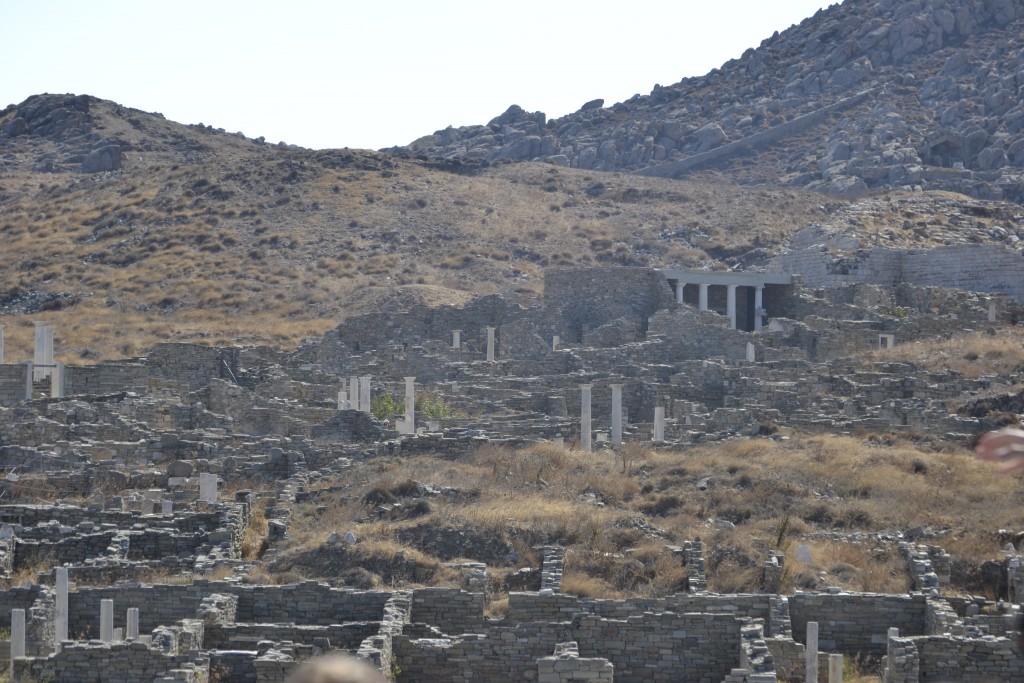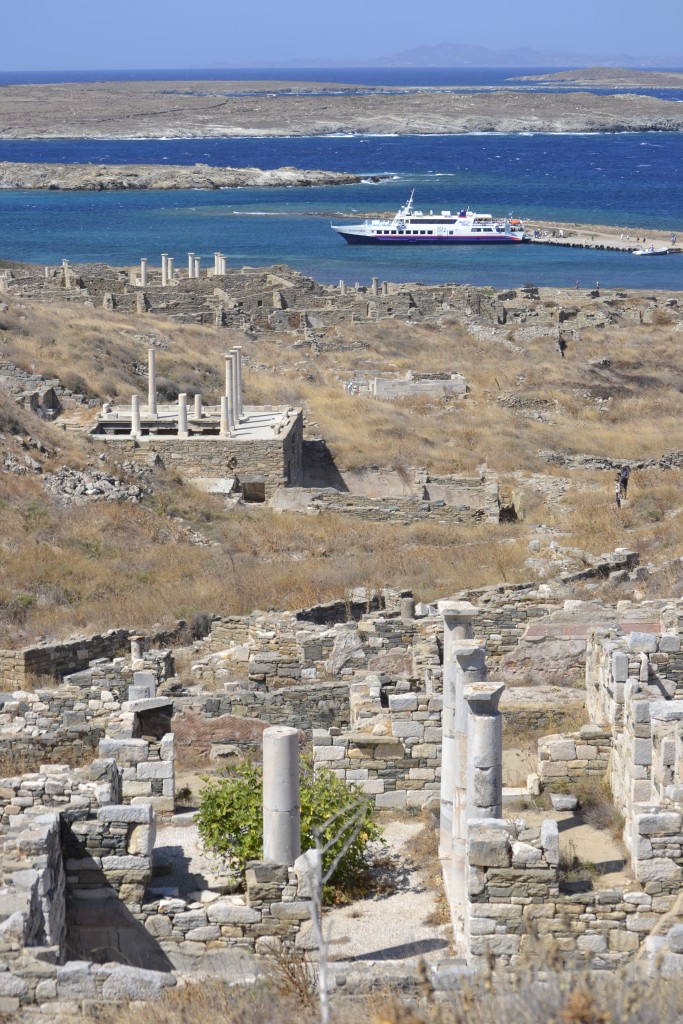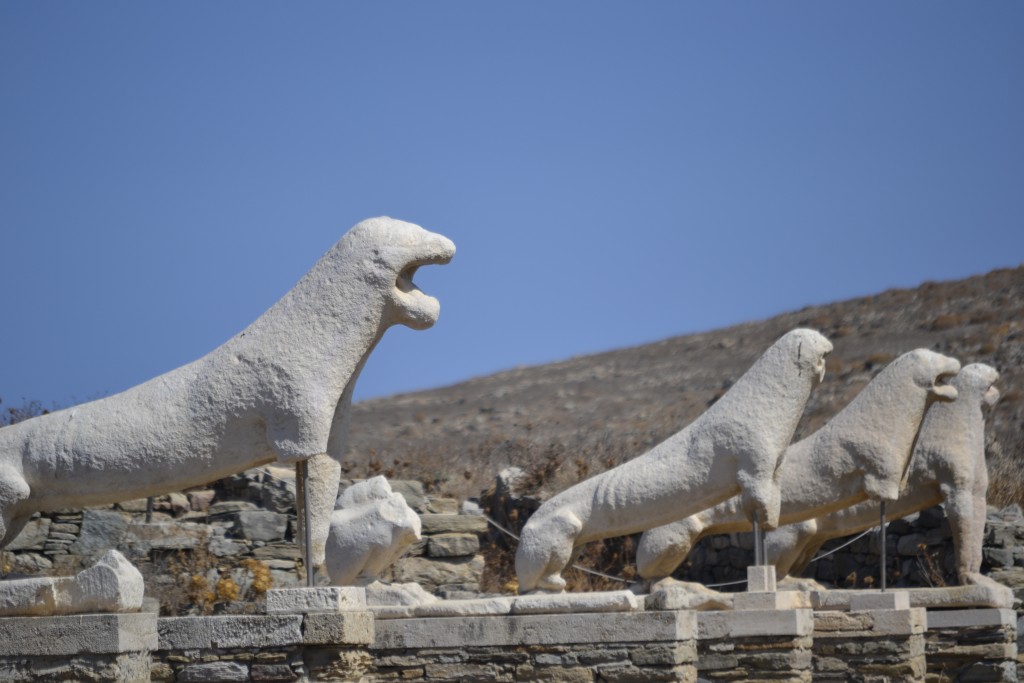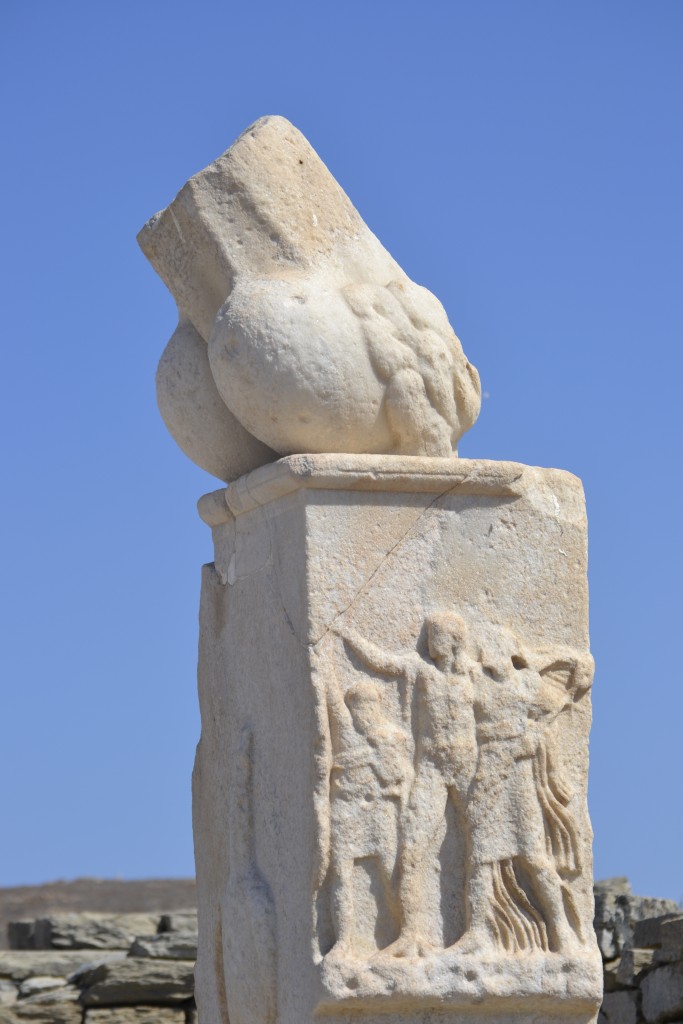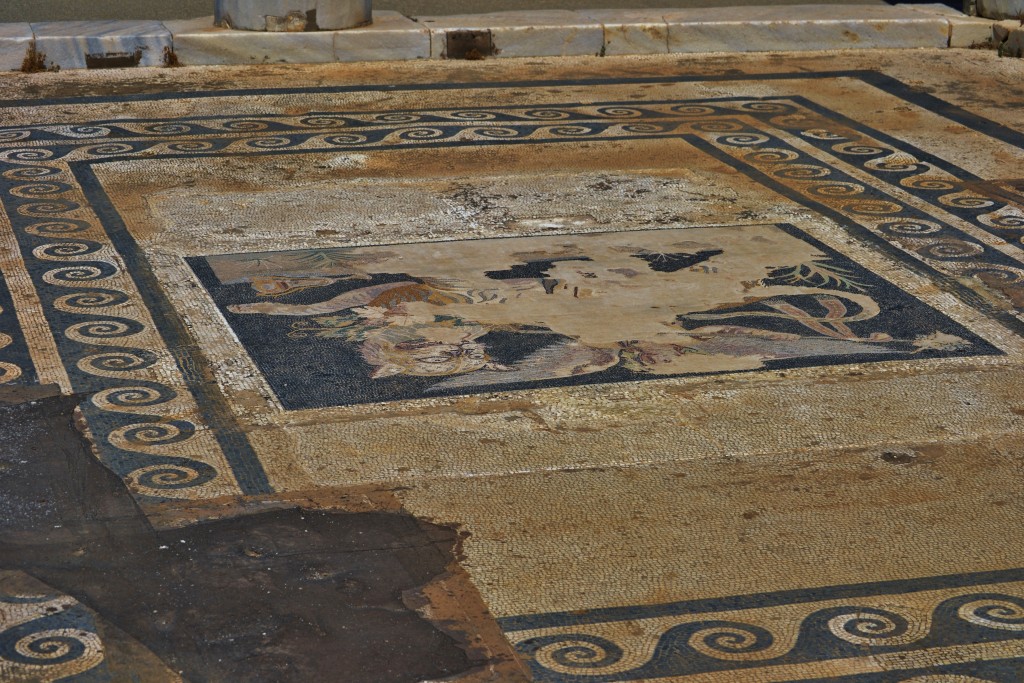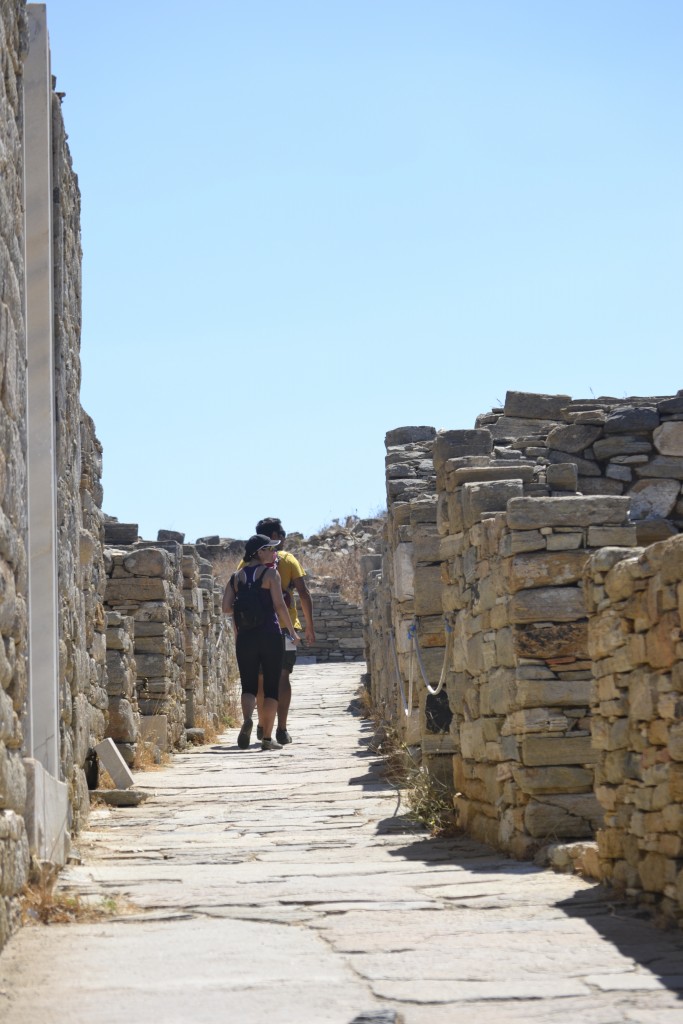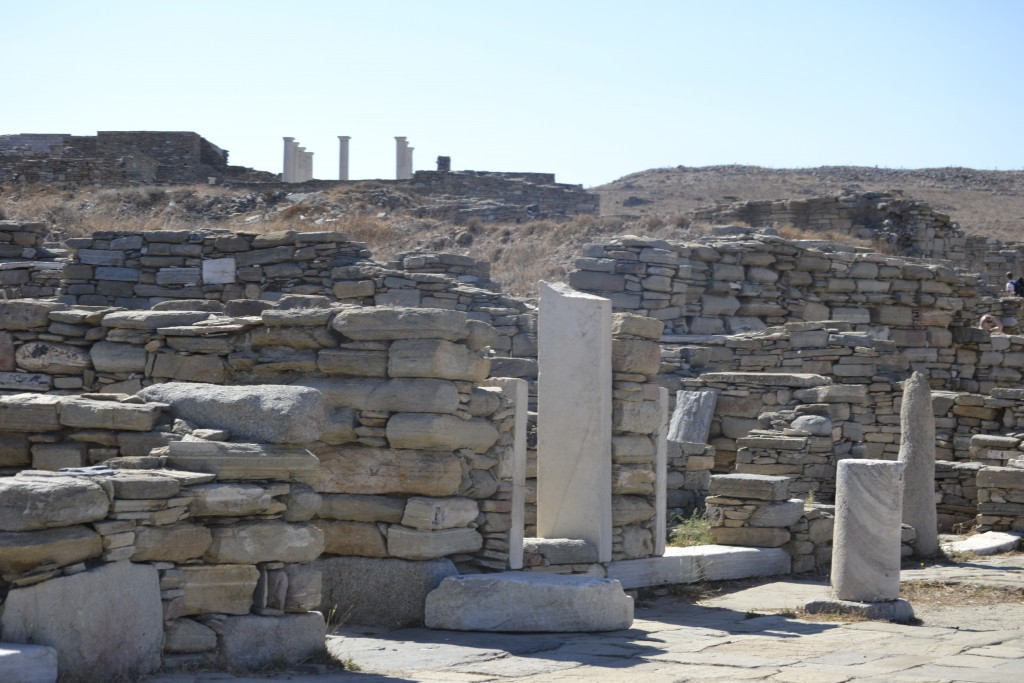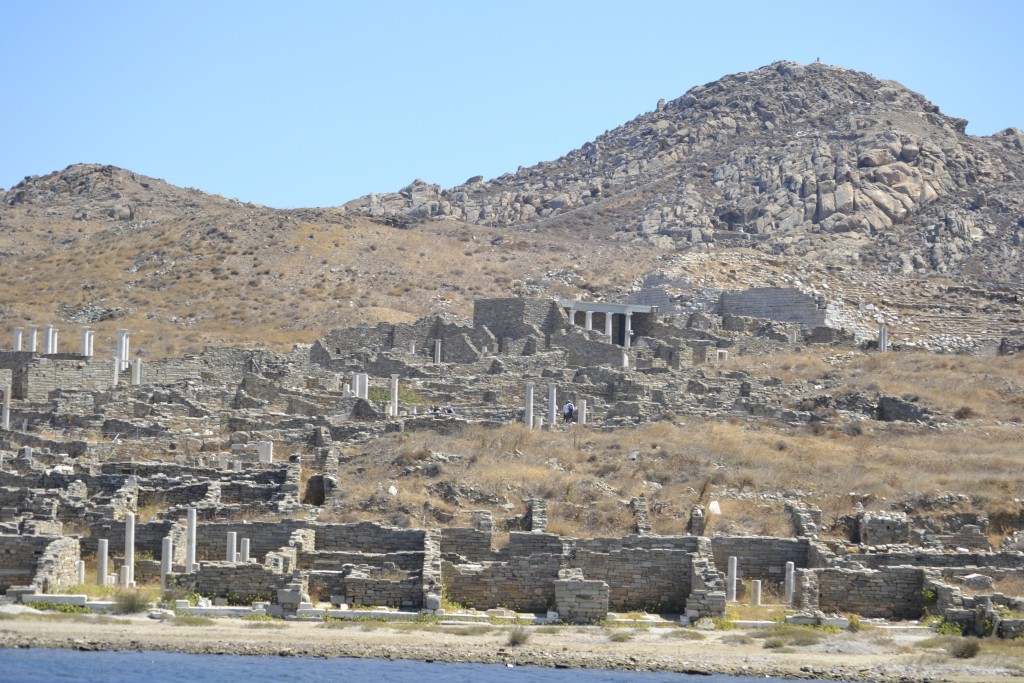As the cruise ship arrived in Mykonos, I learned that I could board a ferry to Delos, the island of the gods. I immediately approached the kiosk to pick up my ticket since I had not made previous arrangements and tickets sell out fast. In only a couple of hours I would be departing on the MV Delos Express and exploring the uninhabited island considered the birthplace of Apollo and Artemis.
As the ferry approached the island, I was overwhelmed by the number of ruins sprawled out across acres of land. I purchased my ticket to enter the archaeological site and was provided a map of Delos. Local guides were on hand for an additional charge to those visitors who were interested in personal tours.
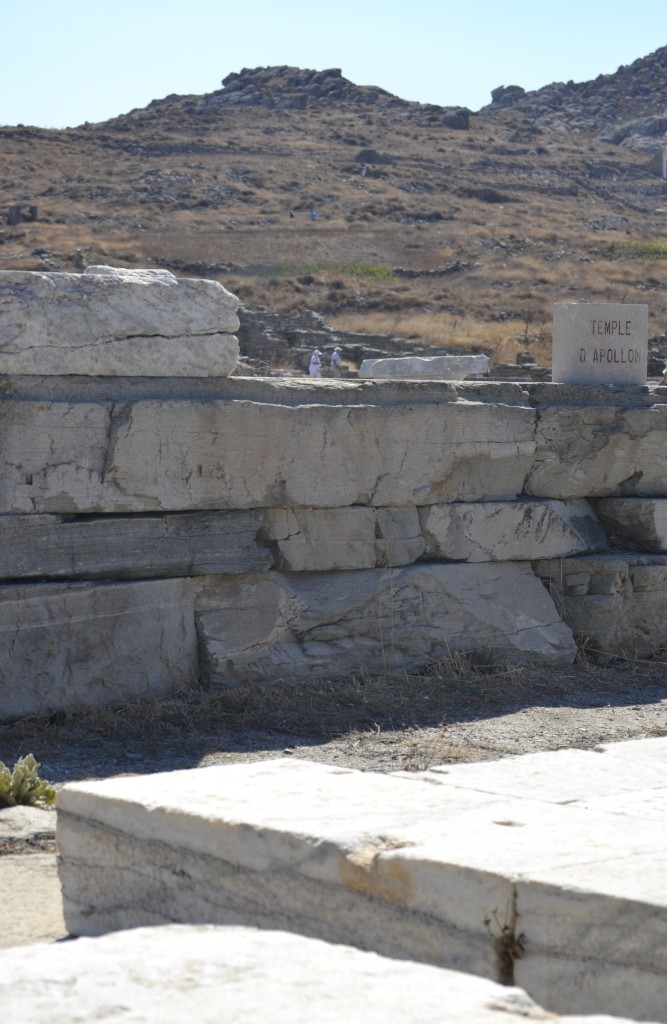
I began my adventure searching for the Temples of Apollo and Artemis. Greek mythology revolves around the story of this brother and sister duo and their temples which were of most importance. The Temple of Apollo once housed the Treasury of Greece until it was relocated in the 5th century BC. Even after the island was abandoned, Greeks continued to visit the temple for the annual Panegyris festival in spring. The remains of the temple are sparse, but visitors can see the giant marble pedestal which once displayed the 35-foot Apollo statue.
Since the 1st century AD, the island was left abandoned and excavations by French archaeologists began in 1872. By then, the island of Delos was completely covered in silt and only one-fifth of the site has been uncovered. So much more to be discovered.
The Lion Terrace was undoubtedly one of the most fascinating sites on the island. Mythological legend claims that the statues were provided by the island of Naxos to guard the Sacred Lake as Leto gave birth to the twins. Replicas of the lions continue to watch over the lake, while the originals are housed in the nearby archaeological museum.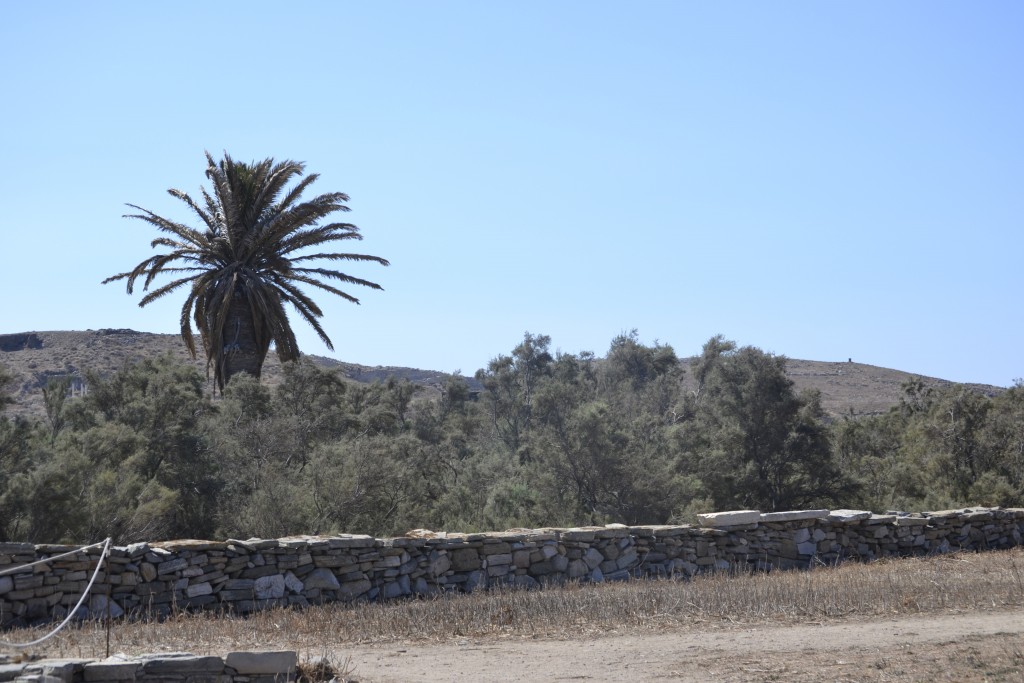
At the Sacred Lake stands the palm tree of Leto. It is said that Hera took hold of this tree while in labor with the twins, giving birth first to Artemis and then her brother Apollo. The lake no longer exists because it was drained by the French archaeologists to prevent bacterial disease and other dangerous organisms from growing.
Where once stood the Temple of Dionysus, is now the Phallus of Apollo. Not only was the phallus a symbol of Dionysus, It was erected as a representation of Apollo, the god of Patros (the father of all), the progenitor of the male ancestor, the symbol of fertility.
A residential area stands to the south of the island where a neighborhood of homes were discovered. During excavations, the archaeologists have determined the wealth of these families based upon the beautiful floor mosaics. The minuscule tiles and delicate delicate artwork have survived over many years, protected by the silt. The museum houses additional floor mosaics to shield them from the impacts of weather and the salty environment.
I can see Mount Kynthos on the left as I navigate through the network of streets in this ancient neighborhood of sorts. Once a bustling port town, the island of Delos was home to over 30,000 residents and an estimated 3,000 shops.
Through the maze, I found the Dolphin House known for its spectacular dolphin mosaic with a circle enclosed by a square. It is one of two mosaics that were signed by its original artist. The gorgeous mosaic in the House of Dionysos shows the winged goddess riding a tiger and is an amazing example of Hellenistic art. Within the House of Trident, the perfectly refurbished floor mosaic displays a dolphin, wrapped around an anchor.
Within walking distance was the Theater at Delos which seated approximately 5,000 spectators. In need of extensive repair, even in its current state, one could see the magnitude of its size.
The island of Delos was the home to Mount Kynthos (in the background) which rises 375 feet and is the highest point on the island. Unfortunately I did not have enough time to climb up to the top of the mountain to see the remains of the Temple to Zeus and Athena but I heard other ferry passengers discussing their spectacular view from its peak.
It was decreed by the Athenians in the sixth century BC that no one could be born or die here. The residents at the time were relocated to a nearby island, Rinia to keep the island of Delos pure for the gods.
Just as I had expected, my excursion to Delos was well worth the visit. I took the time on the ferry back to imagine the island with inhabitants and wished I could have seen it in its prime. An island dedicated to the gods? Not a bad place to be born.
What are your thoughts on Delos? Have you been to the island? I would love to hear from you if you will kindly leave a message in the comments section below. Many Thanks and Happy Travels!
What to See and What to Do:
The Island of Delos accessible by Naxos, Mykonos or private yacht.
- Admission Fee: 12 Euros if you are not paying for a guided tour; Guided tours are 50 Euros.
- Hours: The earliest ferry departs from Mykonos at 10 AM while the last ferry from Delos to Mykonos departs at 7:30 PM. Another ferry departs at 1:30PM, so if you are traveling by cruise ship, you will want to ensure that you select the early ferry.
- Scenic View: Amazing views of ancient civilization and the amazing colors of the harbor.
- Length of Visit: 3 hours or more to explore the ruins, climb Mt. and visit the museum.
- Travel Tip: You must ensure you take the correct ferry whether you are arriving to the island of Mykonos by cruise ship or visiting the island on your own. There are no accommodations on the island and for many years the island does not allow overnight stays.
Where to Stay:
Not available on the island of Delos
Where to Eat:
There is a cafe on the island, but the food is basic and a bit overpriced, Either bring something with you or snacks or wait until you return to your original location.
For more information about the beautiful country of Greece, visit my following links!
Santorini: Life on a Volcano
Mykonos: Whitewashed and Wild
Corfu: An Old Town, Palace and Monastery
Corinth, A Biblical and Historical Perspective
The Site of Olympia and its Role in the Olympic Games
The Archaeological Museum at Olympia
Athens, Greece: A Living Museum
